Life on the road as a female lorry driver
- Published

From hairdressing to haulage, Leonie John is embarking on a new career
The haulage industry has a shortage of drivers, so the government is urging companies to encourage more women to get behind the wheel. But what's life on the road like for a female trucker?
"I've never been out on a job by myself before," says Leonie John, as she smoothly pulls her 44-tonne truck out of a tight junction.
The 22-year-old former hairdresser now works for C M Downton, a haulage company with its headquarters in Gloucester and depots around Britain.
She started her apprenticeship in February, has gained the necessary qualifications and soon she'll be driving HGVs on her own all the time.
Leonie always wanted to be a lorry driver - she says she hates being "stuck in one place" - but she thinks at least one aspect of her former life has helped with her new one.
"When I was a hairdresser I had to keep to appointment times and not keep people waiting. Now I'm a lorry driver, I have to keep to a delivery schedule and not be late. So it was useful practice."
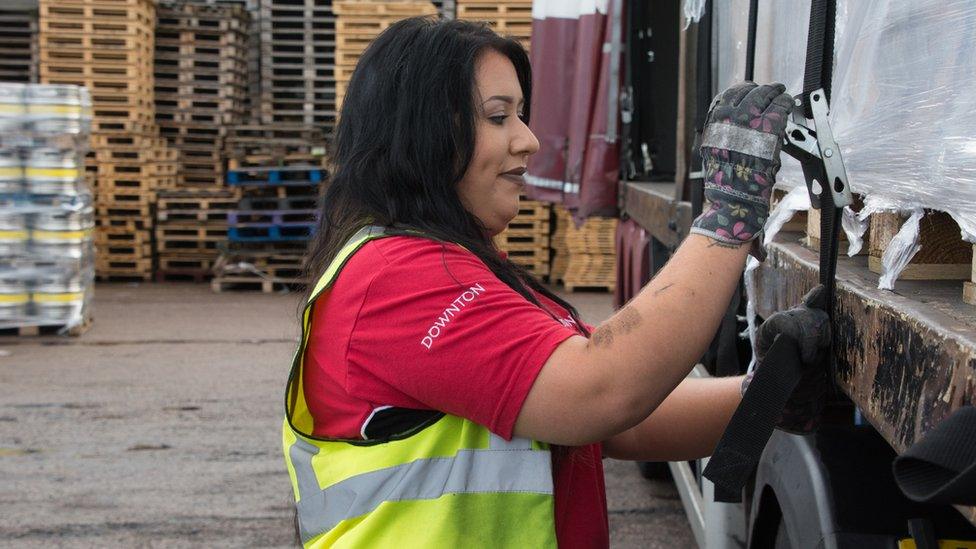
Trailer straps have to be tightened before departure

There is a physical element to lorry driving, particularly before setting off
Haulage associations estimate there's a current shortfall of 45,000-60,000 drivers, with another 40,000 due to leave the industry by 2017.
MPs on the Commons Transport Select Committee, external have urged companies to expand their female workforce, which currently makes up just 8% of the 400,000 qualified drivers.
They also want the industry to come up with plans to attract more people from ethnic minority backgrounds.

Driver shortages
92% of the 400,000 people holding both an LGV licence (also known as HGV) and a Driver Certificate of Professional Competence are men
More than 60% of LGV drivers are aged 45 years or over (compared with 35% in the general working age population)
About 1% of LGV drivers are under 25
It was reported in 2010 that only 3% of the road haulage workforce in England was from a Black, Asian or minority ethnic background

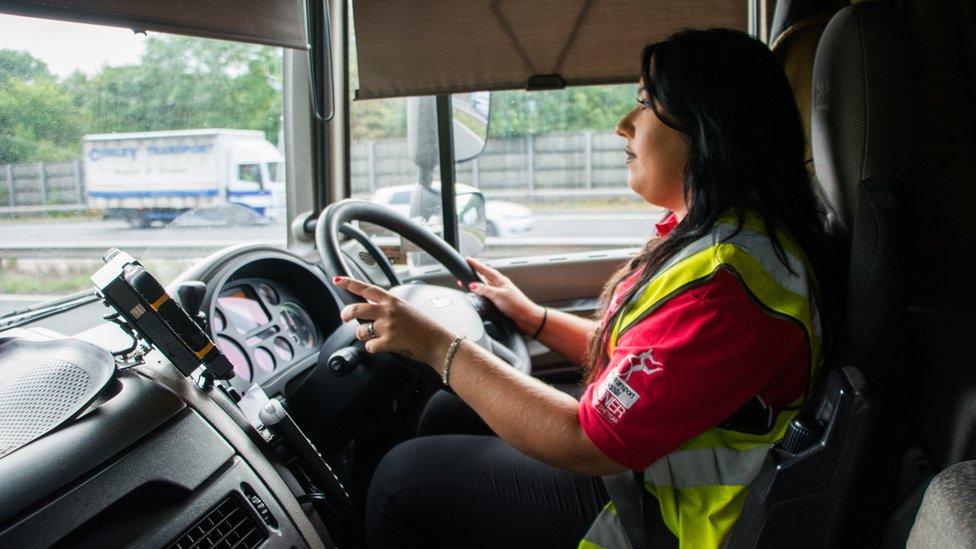
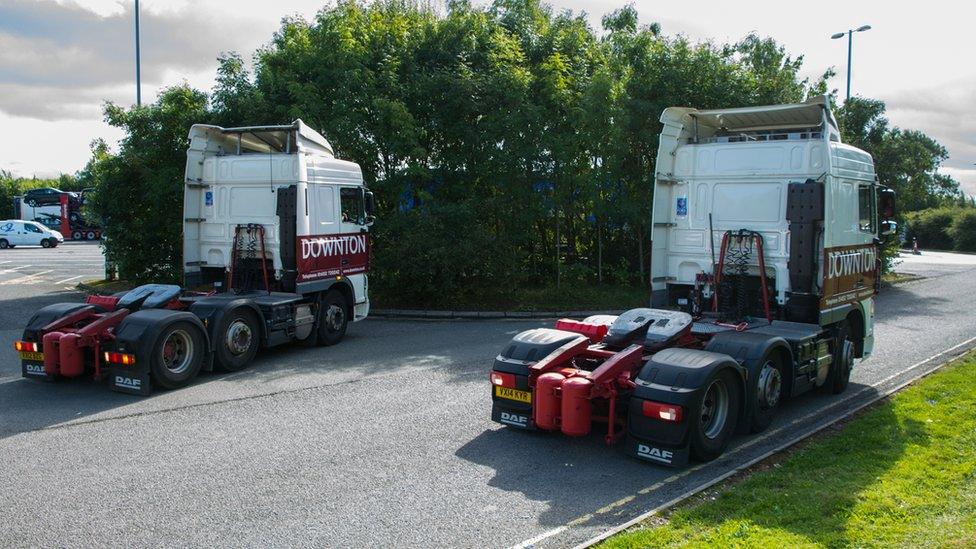
At Downton's Gloucestershire base there are 210 drivers - six are women.
Leonie describes the job as "quite active", as there are many vehicle checks to be made - she finds a blown bulb at the back of the trailer before she sets off.
Straps have to be tightened to ensure the loads are secured, and the surrounding curtains have to be pulled open and closed, which takes a bit of heaving.
"I would recommend being a driver," she says. "You get to go out and see the world. And it's nice knowing you've delivered something that's going to appear in the shops for people to buy."
But with day shifts being anything from 11 to 14 hours, life on the road can take its toll.
"My partner has a five-year-old daughter and there was a period where I didn't see her much. It is tough and the hours are long."
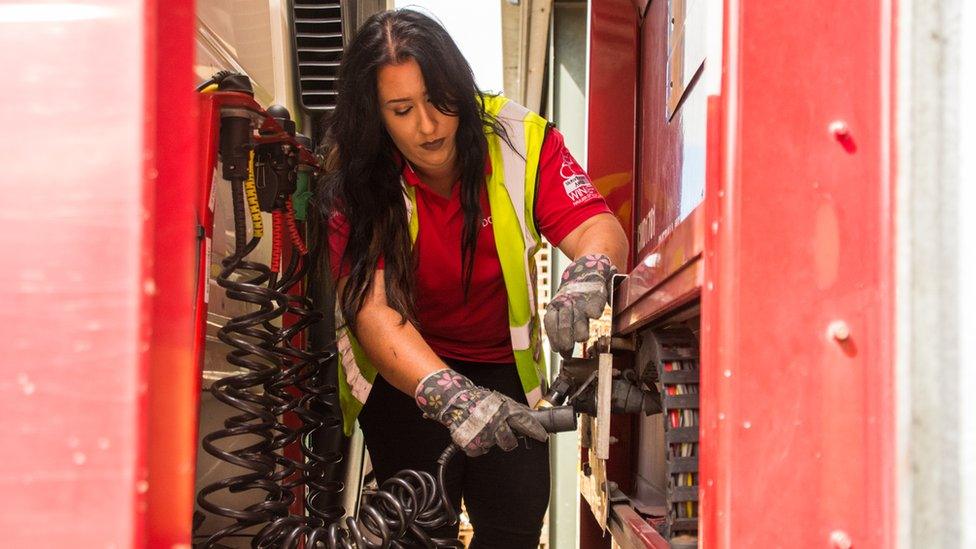
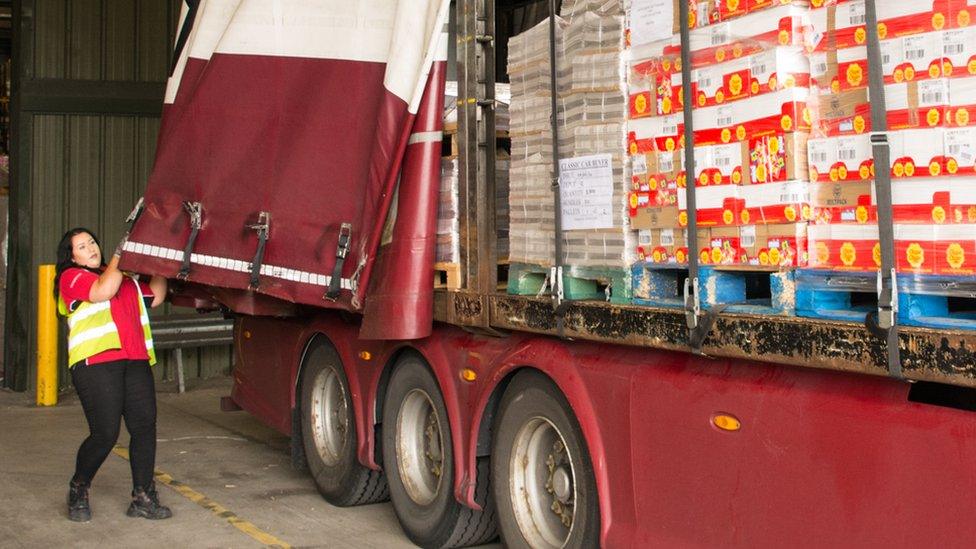
Her initial apprenticeship period paid £180 a week. During her training, when she drives alongside a mentor, she says she'll get £4.50 an hour. Whenever she is out on her own, that rises to £9.
Leonie says it "is a struggle for women in the industry" because it is so dominated by men.
"I told my dad I wanted to become a lorry driver and he wondered if there was something about the job that meant it wasn't for women, because so few of them did it."
She thinks having better facilities would help.
"Some of the facilities at service stations and depots where we deliver to can be awful. There'll be one toilet for all drivers to use, and it won't have been cleaned enough. It's not nice for women to deal with that."

Lorry life
Prospective lorry drivers must be over 18 and have a full UK or EU driving licence
The cost of training depends on where you live, how long you've had your basic licence and which new licence you require
Cat C licences are for vehicles with a rigid-based body weighing more than 7.5 tons - such as fire engines and rubbish trucks. Starting salaries are about £24,000 per year
Cat C+E licences are for any vehicle over 7.5 tons that has a detachable or separate trailer. Starting salaries for these are about £28,000 per year

In a recent survey of nearly 2,000 people, the Freight Transport Association found a common belief that lorry drivers were mostly older, overweight males and that the job involved long hours and was expensive to train for.
James Hookham, the FTA's deputy chief executive, also says there is a wrongful perception that it is very physical.
"Modern cabs are like spaceships these days, with automatic gears and steering and lots of creature comforts."
He says the industry does, though, need to offer women more flexible hours in order to fit with family life, and he agrees that poor roadside facilities are a problem.
Annette Stagg, 53, of Elton in Cheshire, grew up in the haulage business as her father ran a company, but only became a driver for C M Downton later in life.
She agrees women "don't need to be Superman" to deal with the physical aspects of the job: "If you have a puncture you pull over, call the depot and a specialist team come out to change the tyre.

Annette Stagg says being a lorry driver gives her a sense of freedom in her job
"The lorry cabs are all high-spec and quite secure. Once you're locked inside at night, then the only way in would be through smashing a window. And there's a phone in the cab with a direct line to the police. So I feel quite safe sleeping in one."
The mother-of-two says she has generally been well accepted by male drivers.
"There's a hell of a lot of camaraderie and banter among the drivers. As soon as they see the hi-vis jacket they start chatting to you and we have a laugh. They don't really give a damn if you're a woman or not.
"They call me a pup in training, because I haven't been doing it 30 years. But I'm glad I got into it, because I love my job."
- Published27 November 2015
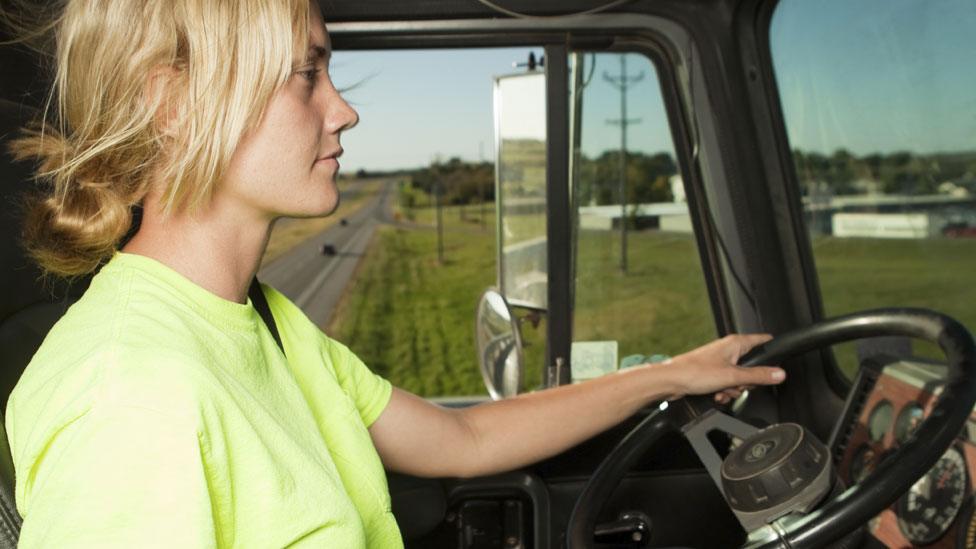
- Published29 August 2016
